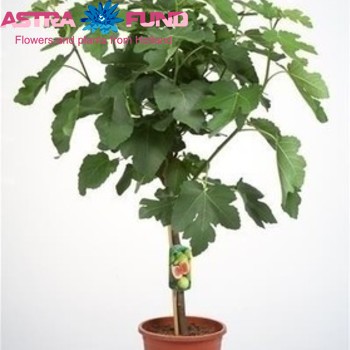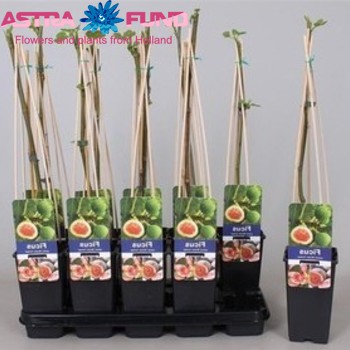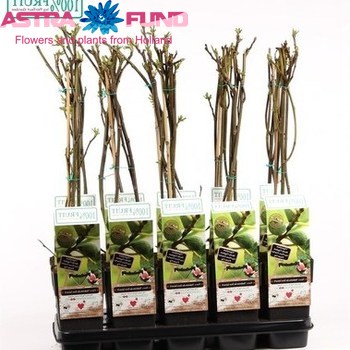Subscribe to our newsletter
Ficus carica

Ficus carica, the common fig or fig tree, is a deciduous shrub or small tree in the Moraceae (mulberry family) that originated in the Mediterranean, was domesticated over 6,000 years ago as one of the most ancient fruit crops; it was diversified into numerous cultivars, and is now grown in temperate regions worldwide for its delicious “fruits” and unique pollination system. The fig is not actually an individual fruit, but is a synconium--a type of specialized hollow, fleshy branch or receptacle with numerous flowers forming into fruits inside of it, generally after cross-pollination with a tiny fig wasp Blastophaga psenes. The fig is a many-branched shrub or small tree, to 3 to 9 m (10 to 30 ft) tall, but rarely reaching diameters of more than 17.5 cm (7 in). The trunk and branches contain large amounts of milky white latex, like various other Ficus species, including F. elastica, which was formerly used as a source of latex for rubber. The leaves are alternate, thick, and palmately, with 3 to 7 deep dissections, each coarsely toothed. Leaves are up to 25 cm (10 long), with a scabrous (rough) upper surface, and pubescent (soft hairy) underneath. The synconium (fruiting structure) that grows in the axils (where leaf meets stem) may range in color from yellow to green to purple to bronze on the outside, with 30 to 1600 tiny flowers inside. Some female fruits may develop without pollination, but others require pollination with male fig flowers, or cross-pollination, in order to develop. Pollination occurs in a tightly coevolved interaction with only one species of specialized fig wasp, which crawls inside a small hole in the tip of the syncomium. The female wasp lay eggs inside the receptacle then dies, but the offspring generally complete their lifecycles, hatching into larvae, pupating, and emerging as adults, that leave the syncomium as the fruit ripens. The seeds that develop are embedded in a fleshy wall, which turns sweet and juicy when the “fruit” is ripe. Figs, which are high in carbohydrates, vitamin K, and are a good source of minerals including calcium, magnesium, potassium, and manganese, are eaten fresh or dried. They are used in numerous dessert and baked goods, as well as jams, and preserves, as well as in some savory and meat dishes.







